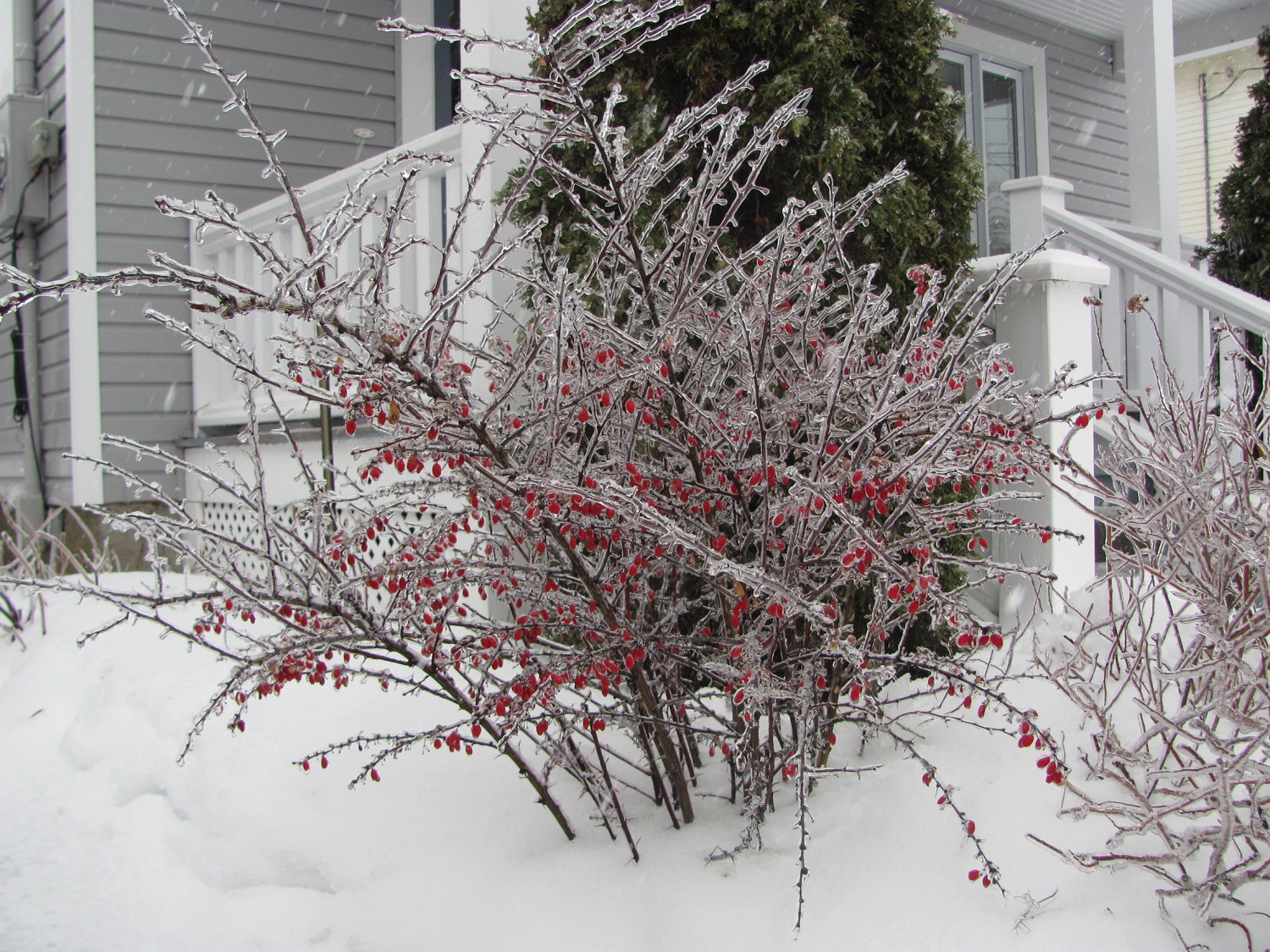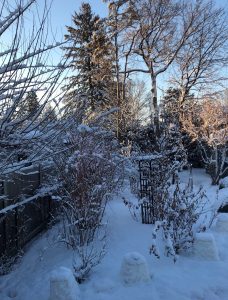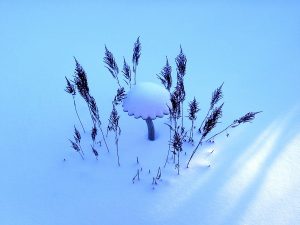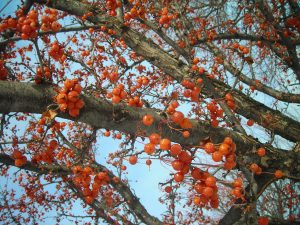By Penka Matanska
I often think the winter garden looks serene in its garment of snow. This serenity makes for a season of peaceful reflection before the buzzing of spring returns. My favourite time to look at and enjoy the winter garden is when there is untouched, fluffy, new-fallen snow. The sparkle of icicles reflecting in the sunlight also creates an enchanting view that no other season can deliver. Snow is a garden’s best friend in wintertime, providing a layer of protection and moisture to all plants.

The gardening season is over by early November, but there is work to be done to prepare for winter so the garden can be enjoyed fully the following year. There is still so much life in the branches and seed heads moving slowly in the wind, even when topped with snow. This is the last chance to collect seeds from late blooming perennials and other plants, but I make sure to leave some for the birds.

I clean diseased and dead branches from plants but leave all other perennials uncut for garden interest and to provide food and a place for pollinators to burrow in for the winter. Tall grasses such as silver grass (Miscanthus sacchariflorus) and astilbe and echinacea seedheads add elegance to the winter scenery and birds will enjoy the seeds.
I leave large garden structures such as arches and bird baths in their place all year round. This gives me a sense that the garden is just in a different phase and soon a new cycle will begin. I love the birds that gravitate to my city backyard for the food, water and shelter in wintertime. The uncut tall grasses and other perennials provide places for them to perch. I fill the bird baths with warm water to melt the snow, providing water for the birds and the occasional squirrel.
Our Ottawa hardiness zone 5a comes with freeze/thaw cycles that can leave areas without a protective blanket of snow. Animals that don’t hibernate in winter can cause damage to the garden as well. Rabbits and voles will chew at tree bark, rose canes, and bushes—rabbits at the snow line and voles at soil level. Planning for how to prevent this damage is part of winter preparation. I use covers for all the small bushes that rabbits may feast on. Styrofoam covers provide good protection for roses and small bushes. Old sheets can be used to wrap the larger plants and fruit tree trunks. Even the tips of evergreen ground covers should be protected from damaging winds. Golden creeping juniper (Juniperus horizontalis Golden Carpet) and miniature hemlock (Tsuga canadensis Jeddeloh) are better wrapped during the winter.
Late fall is time to clean the compost bin for the next batch of leaves and to distribute the compost that has been developing over the summer. Topping up the garden beds with rich composted matter before adding mulch will give a good start for plants in spring.
A thick layer of mulch will help insulate areas during freeze-thaw cycles and where there is little snow cover. Plants located by a fence or close to the house will benefit most from the mulch as the snow cover often doesn’t reach these areas. I make sure the mulch does not touch stems or tree trunks to prevent rot. It is important to wait for the ground to freeze before wrapping the plants and applying the mulch to ensure that growth has slowed down for the winter.

Deeply watering plants, particularly evergreens, in late fall will give them a better chance to survive desiccation from the drying winds and from possible snow shortage. If there is not much rain in fall, I water well until the ground freezes. Since weather has been less predictable of late, if the plants get no snow coverage or look dry during the winter, I continue watering.
I take pictures of my garden before the snow cover obscures the view to use when I am planning for the next growing season. Winter is a good time to think about how to improve or change the garden. You can plan the rotation of crops in the veggie patch or think about of what features to add; a bird bath, a bench, a stone path or a pond help make each garden unique. Other additions such as a new tree or shrub might also be considered to contribute to the interest in the garden.
Once the snow flies, and winter is truly here, it is time to enjoy those serene and peaceful views.
Plants that provide winter interest:

Evergreen trees have a live presence on both a sunny and dull winter day. I use my spruce tree as an outdoor Christmas tree to add to the winter magic in the backyard.
Crabapple (Malus Red Jewel), winterberry (Ilex verticillata), mountain ash (Sorbus americana), and barberry (Berberis) all provide a great contrast in the white landscape and supply food to birds. Faded hydrangea flowers persist all winter.
Other bushes that offer berries in winter and look attractive at this time of the year are red- osier dogwood (Cornus sericea), viburnum (V. trilobum), and rosehips (Rosa rugosa).
Penka Matanska takes great interest in creating urban garden settings and attracting pollinators and birds to her garden. She has been a member of the Master Gardeners of Ottawa-Carleton since 2019.






